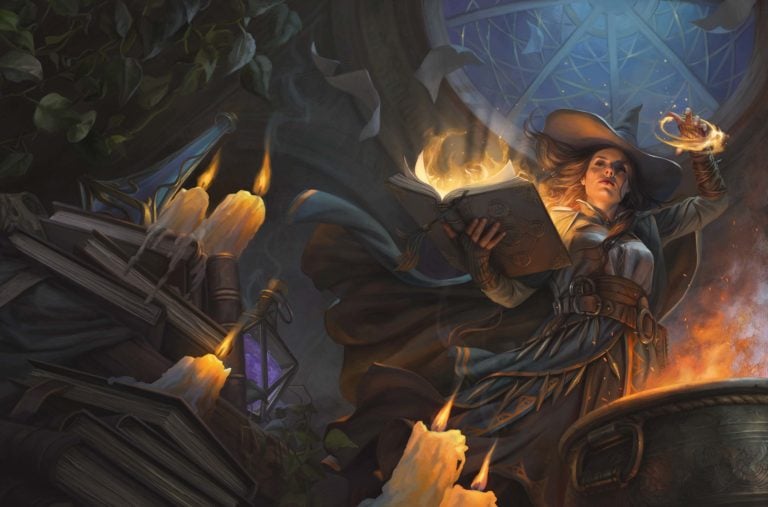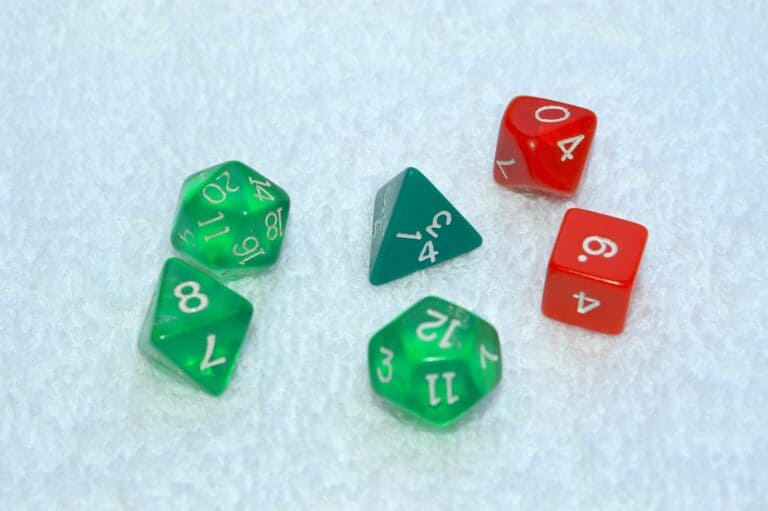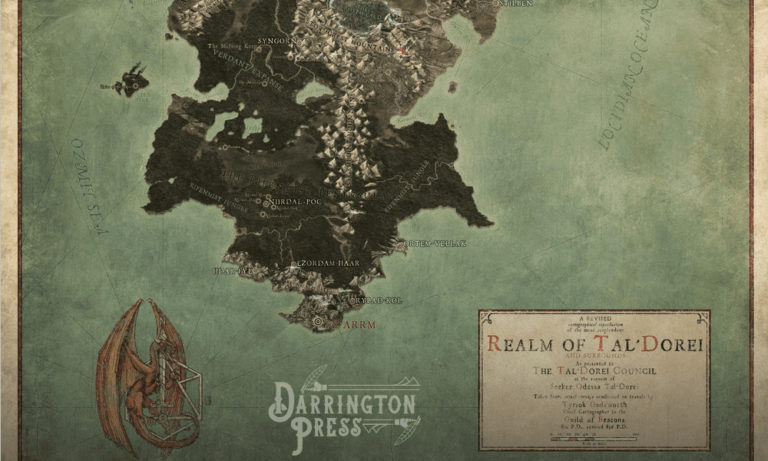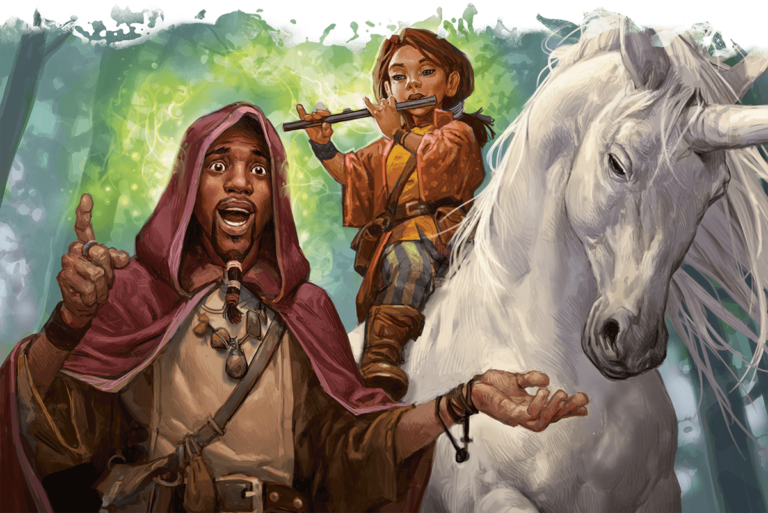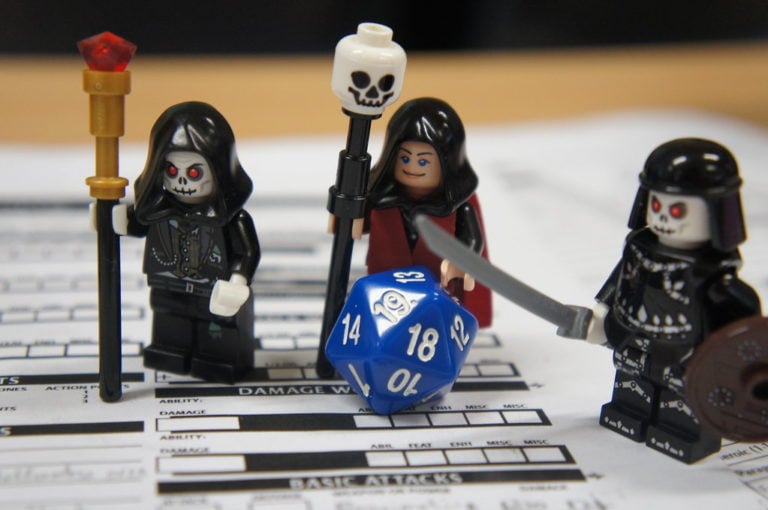Circle of the Moon 5E Guide | Rules, Tips, Builds, and More
Amongst the Druidic Circles are those who deal entirely in the Wilderness. Unimpressed with other orders’ usage of magic, the Circle of the Moon works together as beasts, and with beasts. They assume whatever form is required in any situation; they might become a spider in one moment, a massive octopus the next, and a giant bear immediately after. Introduced in The Player’s Handbook, this circle is aggressive towards their goals, and highly individualistic in nature. Can these sheltered beastmasters cooperate with an average adventuring party? Let’s check it out, in our Circle of the Moon 5E Guide.
Table of Contents
The Wild Side: Circle of the Moon
The Circle of the Moon is a melee frontliner at heart. Using Wild Shape to provide massive health barriers and choosing forms that lock enemies down, the Moon Circle is by far the best Wild Shaper. You’ll not see the other Circles provide quite as much combat control while in animal shape. And the Moon Circle druid will continue to be a force of nature throughout every level.

Combat Wild Shape
To begin, the Moon Circle grabs some fantastic action economy and a way to burn spell slots while a Bear. Nice!
When you choose this circle at 2nd level, you gain the ability to use Wild Shape on your turn as a bonus action, rather than as an action.
Additionally, while you are transformed by Wild Shape, you can use a bonus action to expend one spell slot to regain 1d8 hit points per level of the spell slot expended.
Isn’t that stellar!
Being able to Wild Shape as a Bonus Action is, obviously, fantastic. This allows you to turn into something with a great movement speed, move up, and attack. For a lot of creatures, that also means you can start combat by grabbing your opponent. That’s often a death sentence, especially at level 2. Even without the grabbing, doing damage twice with something like the Brown Bear, or tripping with the Dire Wolf, can lead to problematic combos for your enemies.
Alternatively, if you weren’t quite ready for combat, you can cast a spell. While you can’t cast magic while in a Wild Shape, you can still concentrate. That means you can begin combat by casting Barkskin or Call Lighting, transform to get a massive health barrier, and then move. That’s a really efficient first round! Once you get to level 3, the Barkskin spell is one of the most likely candidates for this action; 16 AC will trounce whatever AC your animal form has!
The additional utility of burning spell slots to heal is fantastic for you. You’re not going to need quite as many spell slots as a typical druid, so spending slots to d8 yourself isn’t bad. Please try and prepare as many useful spells as you can, in case you need to problem solve. But, if you’re about to lose your animal form during a problematic combat, then you can keep yourself up, rather than relying on your Cleric.
Circle Forms
The big problem with Wild Shape is that most forms are only useful for scouting. You want that high Stealth bonus and the Tiny size so you can look ahead and get info. The Circle of the Moon throws that to the side.
The rites of your circle grant you the ability to transform into more dangerous animal forms. Starting at 2nd level, you can use your Wild Shape to transform into a beast with a challenge rating as high as 1. You ignore the Max CR column of the Beast Shapes table, but must abide by the other limitations there.
Starting at 6th level, you can transform into a beast with a challenge rating as high as your druid level divided by 3, rounded down.
Needless to say, a CR 1 creature is about the equivalent of a level 2 adventurer. A party of level 1s are likely to have a tricky time, and a level 2 adventurer might have some troubles putting it fully down. That’s expected. So now, you’re draping that CR 1 creature over your head.
At level 2, a Druid is likely to have between 9 and 20 HP, on average. The Dire Wolf, a CR 1 monster? Do you know how much HP it has? 37. That can give you four times as much health, as an overshield.
What?!
In addition, a lot of these creatures are going to be rather dangerous with their attack action. The aforementioned Dire Wolf deals 2d6+3 on a hit, and has a save to knock prone. A Brown Bear can attack twice. Once you can fly, even creatures like the Giant Eagle can look promising, though at that point, you can get CR 2 monsters.
That’s right; the scaling of this class gets crazy! You get up to CR 6 beasts by level 18. That doesn’t change too much; your Beasts are likely to have low attack rolls and will require aid to hit most of the time. But, your high-level spell slots will help out a bit. And once you become a Mammoth, a +10 to hit isn’t horrific.
Your late-game options are ridiculously limited. At CR 3, you get 3 options. At CR 6, you get 1. This can limit what you can actually do with your animal forms, unfortunately. If your GM really likes making statblocks, consider talking with them about getting a few additional options.
You won’t be in a perfect position here, by any means. Wild Shape still doesn’t scale quite perfectly. But, if your GM is good with magic items, you’ll find that these animal shapes will do just fine.
Primal Strike
A huge problem with druids is that it’s so hard to enchant natural weapons. You’re almost completely reliant on artifacts or very specific upgrade paths. This changes that.
Starting at 6th level, your attacks in beast form count as magical for the purpose of overcoming resistance and immunity to nonmagical attacks and damage.
It’s a bit niche, and most GMs will likely throw you a bone of some kind to help out their Bear friend. But, in the case that you’re dealing with a new GM, or the module you’re running doesn’t have much for Druids, then this is essential. The moment something gets resistant to nonmagical attacks, the Moon Druid becomes much weaker. You essentially have to drop Wild Shape and start casting spells.
Thankfully, very few creatures get anything related to magic weapons before this level. It’s difficult for martial characters to actually fight those creatures before now. Therefore, you’re getting this at around the correct time.
Remember to get the correct spells prepared to help deal with problems; if a creature has resistance to magical weapons, then maybe Electricity will work better.
Elemental Wild Shape
Druids have been known for their work with beasts. Now, you can touch another aspect of nature; the elements.
At 10th level, you can expend two uses of Wild Shape at the same time to transform into an air elemental, an earth elemental, a fire elemental, or a water elemental.
The elementals are all extremely potent for their own ways, and these four options put you in a unique position compared to other druids. You get four rather specialized options.
Air Elementals are extremely fast. At 90 ft flight, you’ll keep up with most other creatures in the game. Much better than your animal forms will! However, it’s only upside is speed. It has somewhat lackluster hitpoints, and low-ish damage. It’s Whirlwind ability can be rather devastating, but only in enclosed environments, and it only targets one creature.
Earth Elementals are the tankiest your Wild Shape can get, but have a weird Thunder vulnerability. The burrow speed is okay, but you can replicate it with a spell instead of two Wild Shapes. The damage is even worse than Air Elementals, due to a lack of the Whirlwind ability. At least you double damage to structures? Not exactly fantastic.
Fire Elementals are so, so strange. You’ve got a pretty decent pool of hitpoints, really bad damage with your touches (but they light on fire)… and then there’s Fire Form. I’m not sure who thought Fire Form was okay, but you can literally walk into someone’s square and they just take 2d10 damage, guaranteed. And if they attack you, they take 1d10 damage. You’ll literally only pick Fire Elementals for Fire Form, so it’s a good thing Fire Form deals so much damage to melee combatants. Your Touch Attacks are pitifully bad, but also light people on fire, so relatively fine in retrospect.
Water Elementals are the air elementals of the ocean. You get better tankiness, less damage, but slightly better combat control. The Whelm ability is aggressive and good at keeping creatures under wraps. It’s not awful out of water, but it’s a must-have while in water.
Overall, these elementals have poor damage outputs compared to most beasts, but slightly better tankiness without Barkskin. And most of them have extremely valid reasons to be turned into; Fire Elementals can make any creature with Vulnerability (Fire) disappear, for instance. You’ll be really happy to have these shapes when their scenarios show up.
Thousand Forms
Thousand Forms is perhaps the weakest aspect of the Moon Circle druid. And right at the finish line! Thank goodness Circle Forms scales so well!
By 14th level, you have learned to use magic to alter your physical form in more subtle ways. You can cast the Alter Self spell at will.
Alter Self is a 2nd level spell, so being able to cast it at will isn’t… bad?
The issue is that Alter Self is a problem solving spell. It’s here to give you a Swim Speed, a Disguise, or Natural Weapons… Why not just become an animal with a Swim Speed? Or become a tiny creature with amazing stealth? Or an Earth Elemental and go through a wall? The natural attack one does have a +1 to attack and damage with your unarmed strikes, but… who cares? Most Wild Shape options do insane damage by now.
Once you reach level 18 and can cast Alter Self after you Wild Shape, then you could get swim speed on a mammoth, I guess? That’s not really important, but you can do it if you really want.
Realistically, this is an okay utility spell at most, that solves less problems than Wild Shape does. Use it if you need a swim speed, and then consider burning one of your two short rest abilities and just Octopus it up.
Best Race for Moon Circle Druids
Moon Circle Druids are in an awkward situation. In a perfect world, you’ll always be in Wild Shape. You’ll use both your procs to be a beast during any combat… and thus you’ll never need good Physical Scores. Therefore, get your Wisdom as high as you can. Afterwards, the only other ability score you need is Constitution, in case you get slapped out of Wild Shape.
Lizardfolk
These Volo’s Guide monsters are absolutely spectacular Druids. +2 to Constitution, +1 to Wisdom is almost perfect; with Standard Ability Array, you can get to 20 Wisdom at level 8. With a shield, your out-of-Wild Shape durability is insane, since Natural Armor starts you at base 13. Hungry Jaws may (or may not) work with a Biting Wild Shape. If it does, that’s a massive boost to your durability! Finally, you gain two free proficiencies. What a choice!
Half-Orc
The Half-Orc takes a penalty to casting; +2 Strength, +1 Constitution is far from bad, but not perfect. However, you’re looking at the Half-Orc for racial abilities. Menacing is free Intimidation (and who says you can’t intimidate someone as a super-intelligent tiger!), and Darkvision is always nice. Relentless Endurance is nearly essential as a melee frontliner, and Savage Attacks works with natural attacks. Since a lot of your best late-game natural weapons are d10s, that’s a ton of damage! This is basically the only place where Half-Orcs are useful, and they’re dang good! Just, be wary that your Spell DCs will be a bit lackluster.
Conclusion – Our Take on the Circle of the Moon
The Circle of the Moon is a fantastic frontliner, and one of the best Multiclassers in the game; Get some Barbarian or Monk levels, and you can be either stupidly tanky or angrily aggressive. Even without Multiclassing, you’ll be one of the best frontline casters imaginable.

